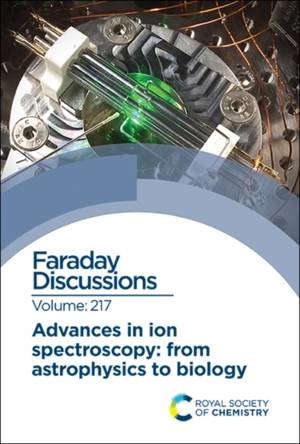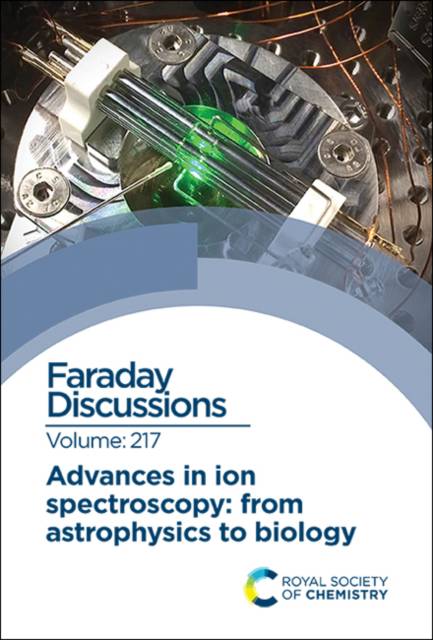
- Retrait gratuit dans votre magasin Club
- 7.000.000 titres dans notre catalogue
- Payer en toute sécurité
- Toujours un magasin près de chez vous
- Retrait gratuit dans votre magasin Club
- 7.000.0000 titres dans notre catalogue
- Payer en toute sécurité
- Toujours un magasin près de chez vous
Advances in Ion Spectroscopy - From Astrophysics to Biology
Faraday Discussion 217
Description
Gaseous ion spectroscopy generally couples mass spectrometry with a class of high-resolution laser spectroscopy, providing a route for studying the intrinsic chemical and physical properties of isolated ions. The isolation of the molecular ion of interest from its native environment is important to decouple the influence of the surroundings from the intrinsic properties. The effect of the environment can then be incrementally re-introduced through studies of sequentially solvated clusters, which allow the interaction with solvent molecules with the ion to be studied on the molecular level.
The field of gaseous ion spectroscopy has the potential to impact a wide range of chemical, physical and biological problems and it has seen a rapid diversification in the past decade with the application of different ion sources, cryogenic ion traps, and new light sources such that this potential impact is rapidly being realised.
This Faraday Discussions volume focusses on experimental and theoretical ion spectroscopy, highlighting the latest innovations and applications in the field. These range from the IR spectroscopy and anion formation mechanism of molecules in the interstellar medium, to the intrinsic structure of catalytic centres in chemical reactions, to the ultrafast dynamics of bioactive chromophores, to exotic ionic systems such as Coulombic crystals and dipole-bound anions. This volume provides a roadmap of where the field is and what the challenges will be over the next 5-10 years and beyond. It covers four main themes:
- Controlling internal degrees
- Pushing resolution in frequency and time
- Going large(r)
- Exotic systems
Spécifications
Parties prenantes
- Editeur:
Contenu
- Nombre de pages :
- 650
- Langue:
- Anglais
- Collection :
- Tome:
- n° 217
Caractéristiques
- EAN:
- 9781788016728
- Date de parution :
- 05-08-19
- Format:
- Livre relié
- Format numérique:
- Ongenaaid / garenloos gebonden
- Dimensions :
- 163 mm x 236 mm
- Poids :
- 1088 g

Les avis
Nous publions uniquement les avis qui respectent les conditions requises. Consultez nos conditions pour les avis.





